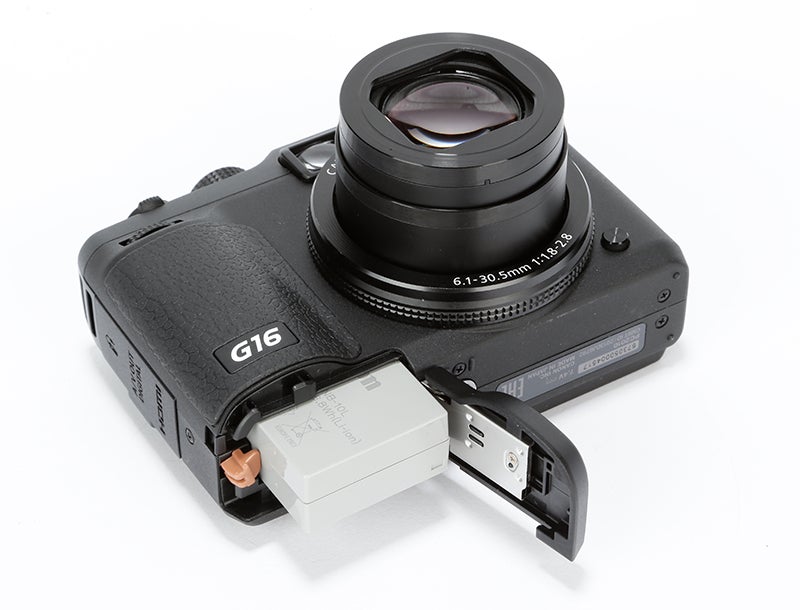Canon PowerShot G16 Review – The Canon PowerShot G16 looks to continue the G series fine advanced compact tradition
Canon PowerShot G16 Review
Canon PowerShot G16 Review – Design

As noted previously, the design of the Canon G16 is virtually identical to the Canon G15. The body is slightly taller, with a panel seam around the top plate, presumably to make room for the Wi-Fi transceiver, and the handgrip is a bit more rounded but other than that everything is in pretty much the same place, including the distinctive overlapping control dials on the top panel.
The design of the G16 is as much a product of evolution as its feature set, and it shows. The camera is a pleasure to use, with comfortable handling, well-designed controls and a menu interface that is quick and intuitive to use.
The build quality is exemplary; the body is mostly metal, with only the top plate made of plastic, and for such a feature-packed camera it is surprisingly light and compact.

Battery and card
The battery and card hatch is solidly mounted on a metal hinge, and another hinged hatch on the side covers the USB and HDMI sockets as well as a socket for an optional remote shutter release switch.
The front handgrip is a bit on the small side, but it has a textured rubber coating and combined with the rear thumb-rest it provides a comfortable and secure grip. All of the main controls can be used while operating the camera one-handed.
The pop-up flash mounted on the top plate to the left of the viewfinder is also a bit on the small side, and not quite as far from the lens as we’d like, but it has a decent range and the camera does have a hot shoe to mount an external flashgun. It has full metering dedication with a range of Canon Speedlites.
The lens bezel can be removed by pressing a button on the front of the camera body, revealing a bayonet-style mounting that is used to attach several other accessories, including a 1.4x teleconverter and a filter adaptor with a 58mm thread.




